2.2 Navigate the Oracle Big Data Manager Console
The Oracle Big Data Manager console is displayed in a web browser and contains graphical tools for transferring data and managing data providers, and for managing users and roles.
The console has the following main sections, which you can access by clicking the links in the tab bar at the top of the page.
Home
Home has two pages that provide different ways to quickly access tools and controls for viewing and working with data. The Quick Start page directs you to the pages for managing data and registering storage providers. It also provides a quick link for asking questions.

Description of the illustration home_quick_start.png
Note:
Clusters created in Big Data Appliance 5.2 run Big Data Manager 2.0, the Quickstart view for this version of Big Data Manager is show above. Clusters upgraded from an earlier release of Big Data Appliance run Big Data Manager 1.0. There are some differences in the console between these two versions of Big Data Manager. The Big Data Manager 1.0 console includes the Notebook and Pipelines features, which are visible in the QuickStart view as shown below. Big Data Manager 2.0 does not include these features.
Description of the illustration badge-bdm-1.0-only.eps
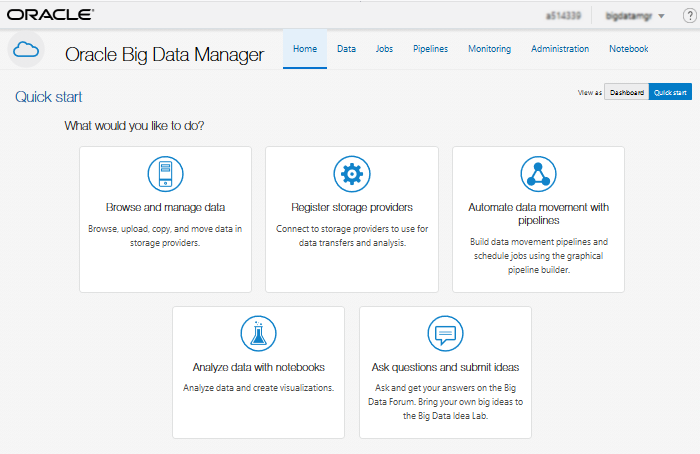
Description of the illustration home-quick-start.png
Use the Dashboard to build and access custom views of data, activity, status, and history.
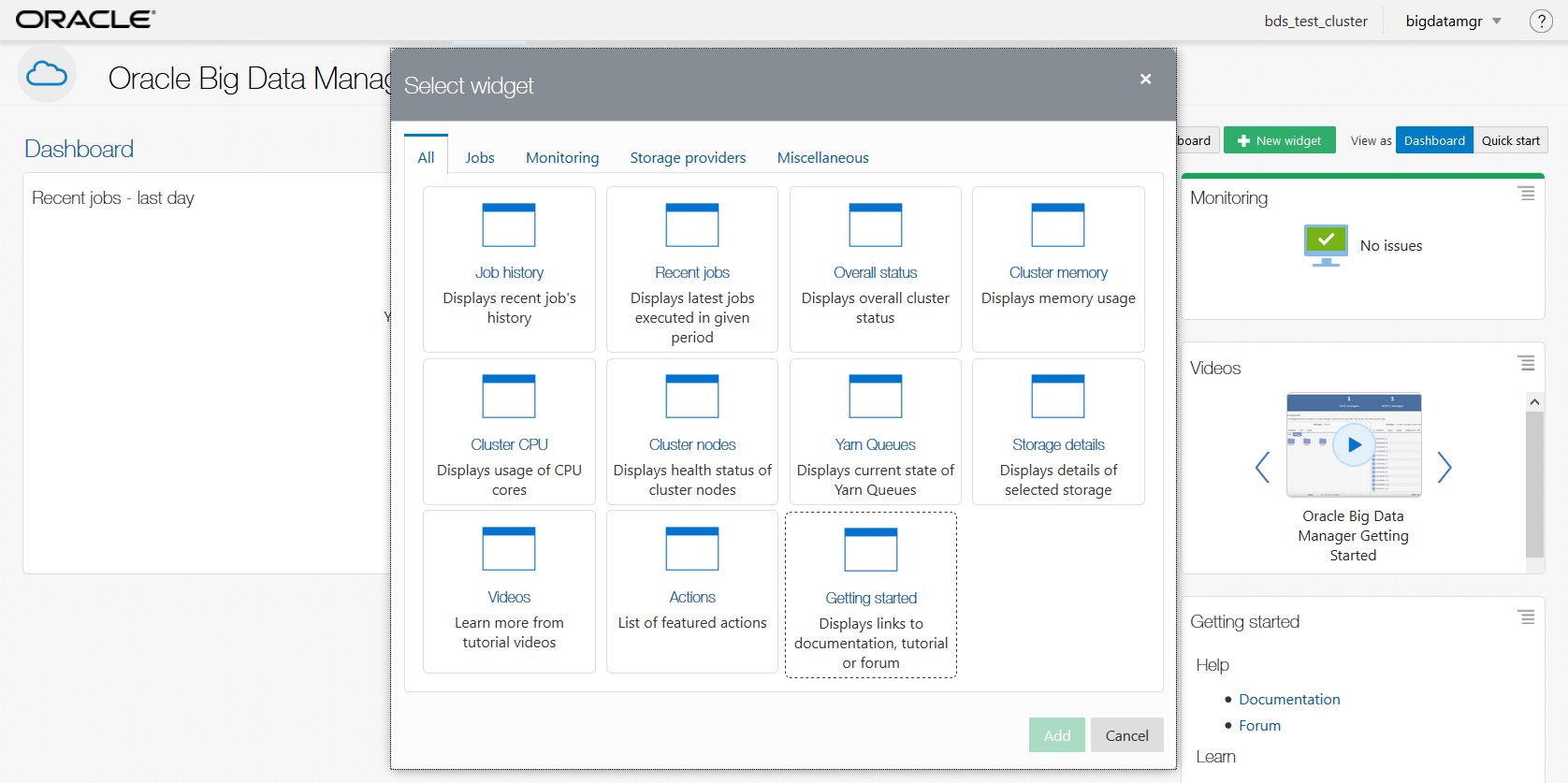
Description of the illustration home_dashboard.png
Data
Use the Data pages to compare, copy, and move files and containers between data sources, including HDFS. You can also upload files, extract the contents from a ZIP archive, and import data to Apache Hive, among other tasks. The counters in the banner show the number of registered storage providers of a given type in Oracle Big Data Manager.

Description of the illustration data_explorer.png
Jobs
Use the Jobs pages to review, manage, and create data transfer jobs.
Users with the user role
will see just the jobs they've created.

Description of the illustration jobs_jobs.png
Pipelines

Description of the illustration badge-bdm-1.0-only.eps
Use the Pipelines pages to chain jobs into pipelines to define workflows.
Users with the
user role will see just the pipelines they've created.
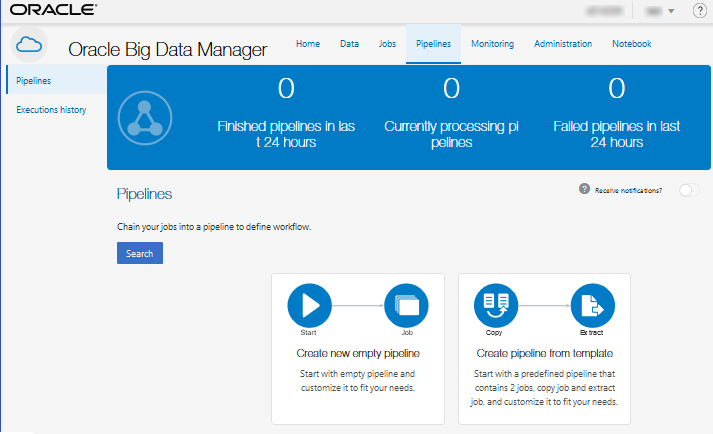
Description of the illustration pipelines-pipelines.png
Monitoring
Use the Monitoring pages to monitor the performance of your cluster and the services running on it.
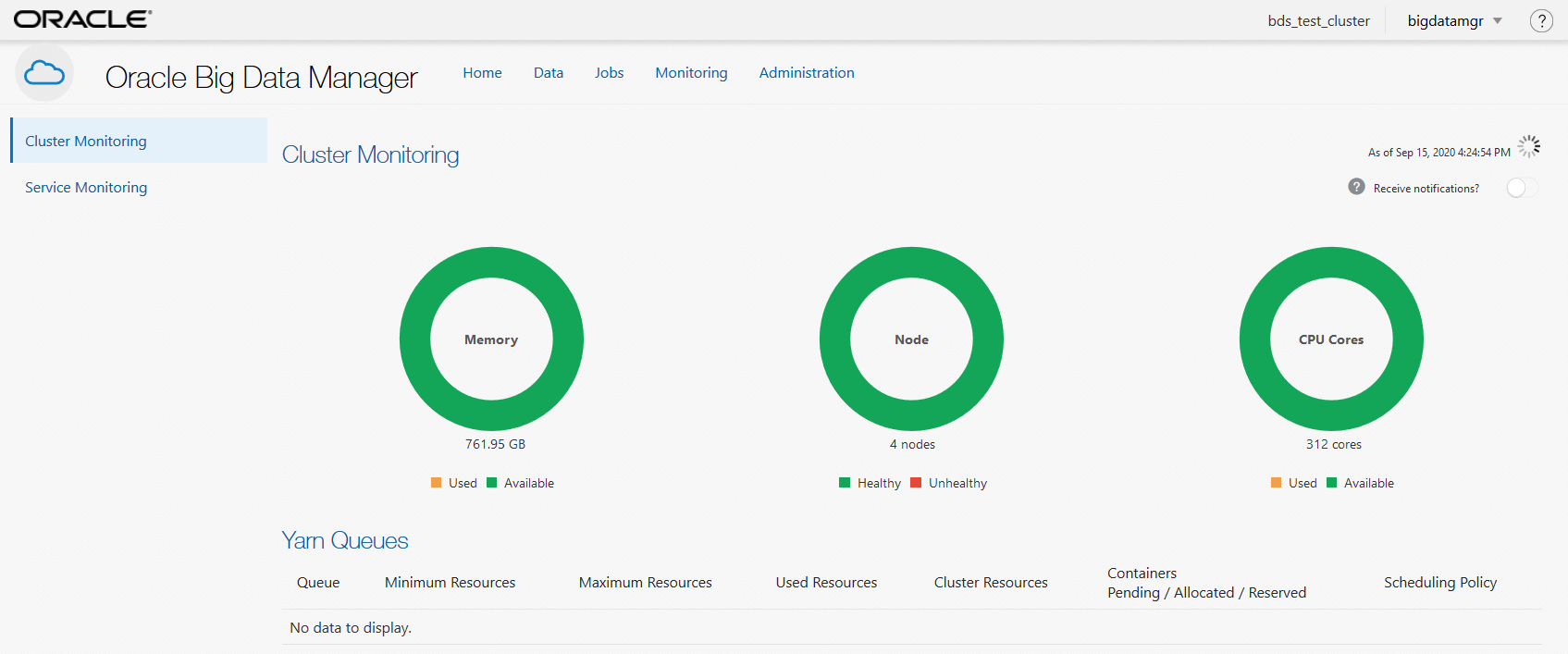
Description of the illustration monitoring_cluster.png
Administration
Use the Administration pages to manage users, roles, storage providers, and settings.
Users with the admin role, such as the default
bigdatamgr user created when a cluster is provisioned, have
full administrative privileges and will see all of the tabs on the left as shown
below. Users with the user role have access to just the storage
provider pages. These users can register new storage providers, and manage the
storage providers they've added.
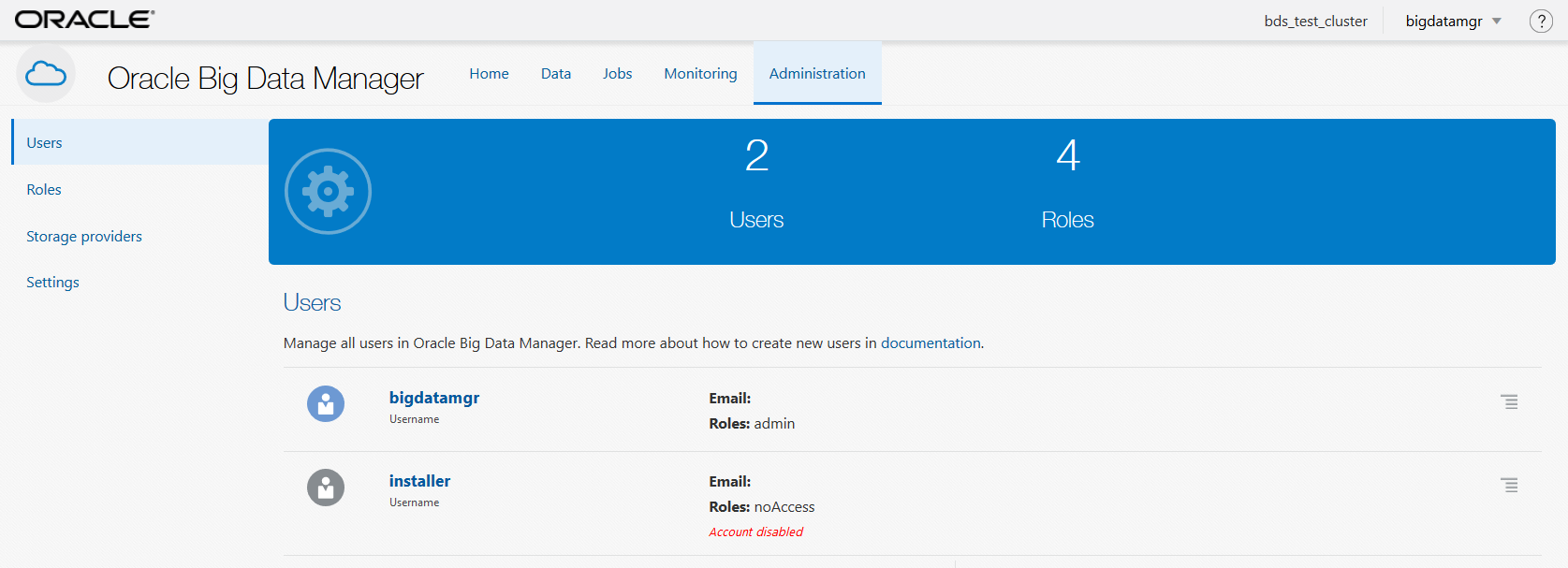
Description of the illustration administration.png